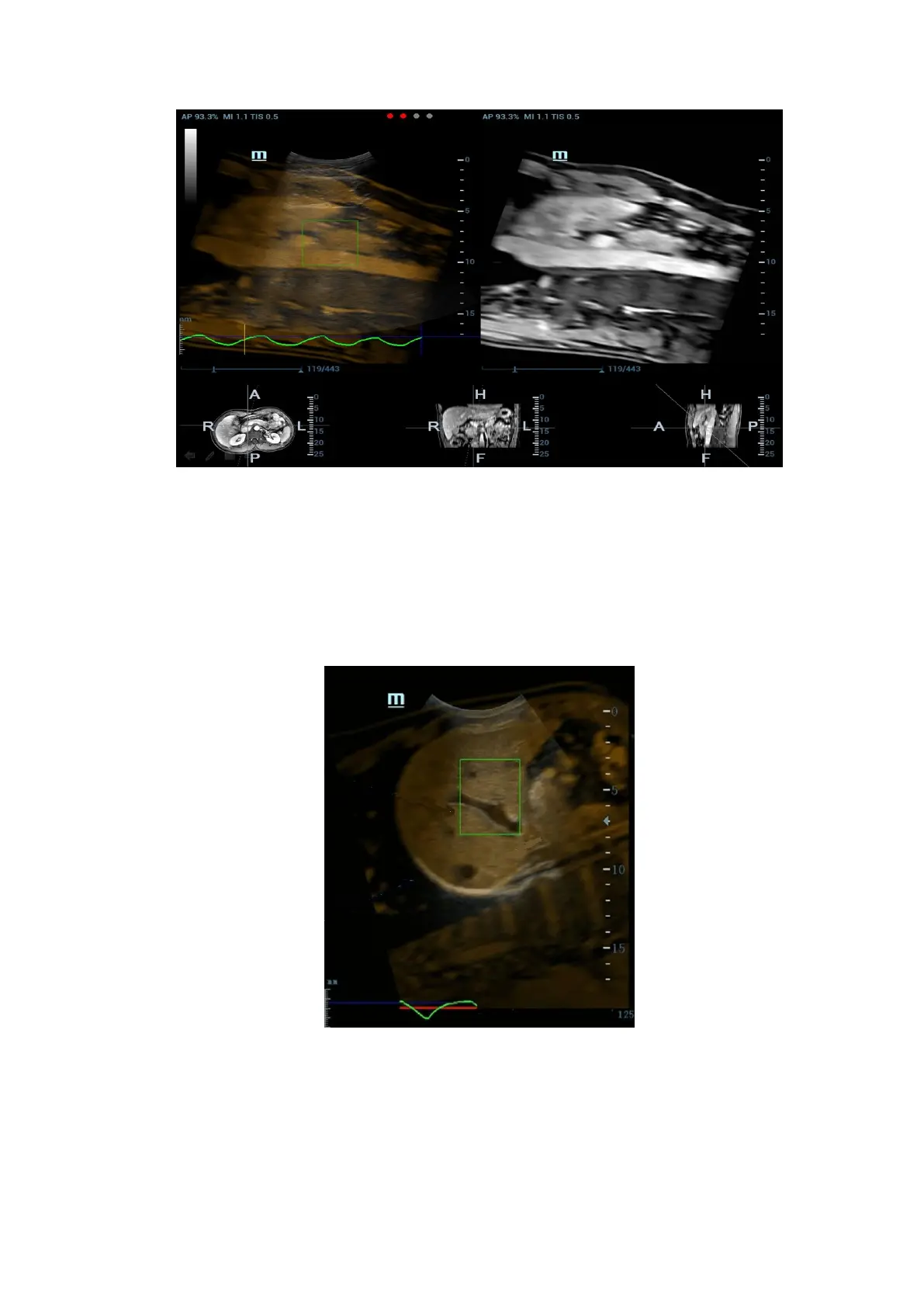Image Optimization 5-131
4. Tap [Motion Modeling]. If modelling succeeds, the system will play the cineloop automatically,
and ROI moves along with the motion of the respiration curve.
Note: RMQF scale is 0~1. 0 represents the poor motion modeling; 1 represents the premium
motion modeling.
Conduct step 4~5 repeatedly based on your demands. Set motion modeling repeatedly until a
premium one appears.
5. Tap [Motion Compen] to activate it. Move the probe. The Ultrasound System shows the CT
image which is processed by respiration compensation (Fusion Imaging with the respiration
compensation).
6. Save multi-frame cine.
Respiration Range
The aspiration curve appears due to the active respiration depth. The respiration
curve beyond the scale becomes the straight line.

